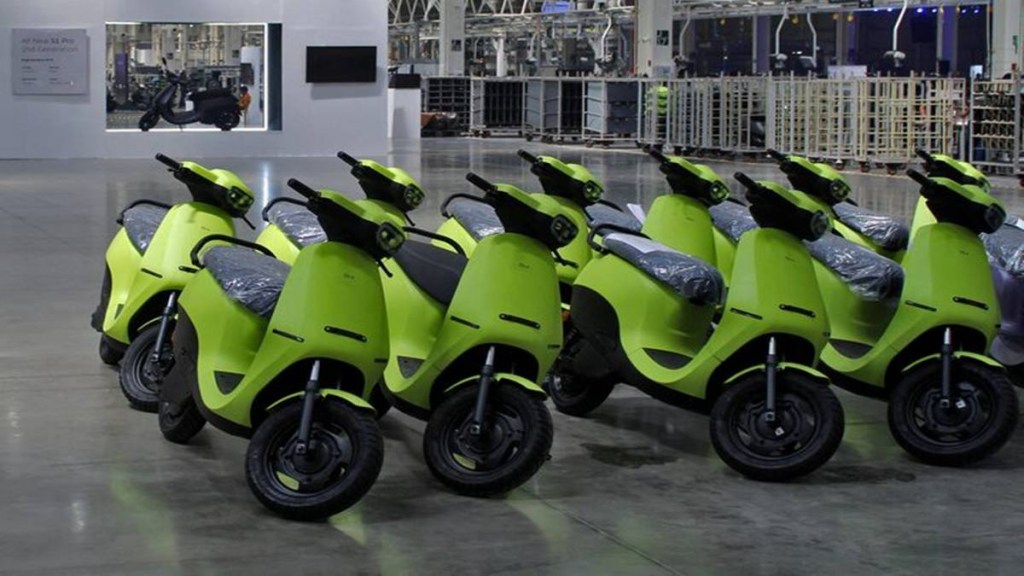Ola Electric has sharply lowered its volume and revenue outlook for the current year following weak first-half deliveries. The electric two-wheeler maker now expects to earn a consolidated revenue of Rs 3,000-3,200 crore in FY26, down from the earlier guidance of Rs 4,200-4,700 crore. Further, it is looking to sell just 220,000 units compared with 325,000-375,000 vehicles that it had hoped to earlier. The performance and outlook, experts pointed out, reflects the subdued demand and rising competition in the EV market.
Losses shrink on cost cuts and integration gains
The company narrowed its losses for the September quarter to Rs 418 crore from Rs 495 crore a year earlier, even as revenues declined 43% year-on-year to Rs 690 crore. The improvement in the bottomline came from reduced expenses, which fell by 43% y-o-y, and greater vertical integration. In Q1FY26, the company had reported a net loss of Rs 418 crore on revenues of Rs 896 crore.
Shares of Ola Electric fell 5% to close at Rs 47.68 on Tuesday, their steepest drop in two months. Commenting on market share erosion, Founder, Chairman and Managing Director Bhavish Aggarwal said the electric two-wheeler segment is undergoing consolidation, with more players entering the space even as the overall market growth has slowed. He said the company is now prioritising sustainable and profitable growth and “doesn’t mind” losing market share to rivals that are “buying” sales through discounting. “Our first objective, in a consolidating market, is to build a structurally sound business model both on product gross margins as well as on operating cost structure, and we have delivered that,” he said on an earnings call. Aggarwal said costs would come down further through manpower rationalisation and reduced operational expenses, including the shift to in-house distribution and registration processes.
Ola Electric turns Ebitda positive as margins improve
For the first time, Ola Electric reported a positive Ebitda (earnings before interest, depreciation, tax and amortisation) in its auto business of 0.3%, while gross margins improved sequentially by 510 basis points to 30.7%. Vehicle deliveries slid to 52,666 units in September quarter, down 46% y-o-y. For the second half of FY26, Ola Electric is targeting total auto deliveries of around 100,000 units.
With core vehicle sales remaining muted, the company is banking on ancillary businesses such as spare parts and its newly launched battery energy storage system (BESS) vertical, Ola Shakti, to supplement revenue growth. The BESS business is estimated to generate Rs 100 crore in revenue in March, 2026 quarter and Rs 1,000-1,200 crore in FY27, with gross margins of 40-50%. Ola Electric has opened up its spare parts ecosystem to third-party garages, including large organised workshops and independent mechanics. “Today, parts revenue contributes roughly 2.5% of revenue from operations. This is a clear avenue for growth and a high-margin business with gross margins above 50%,” Aggarwal said.
